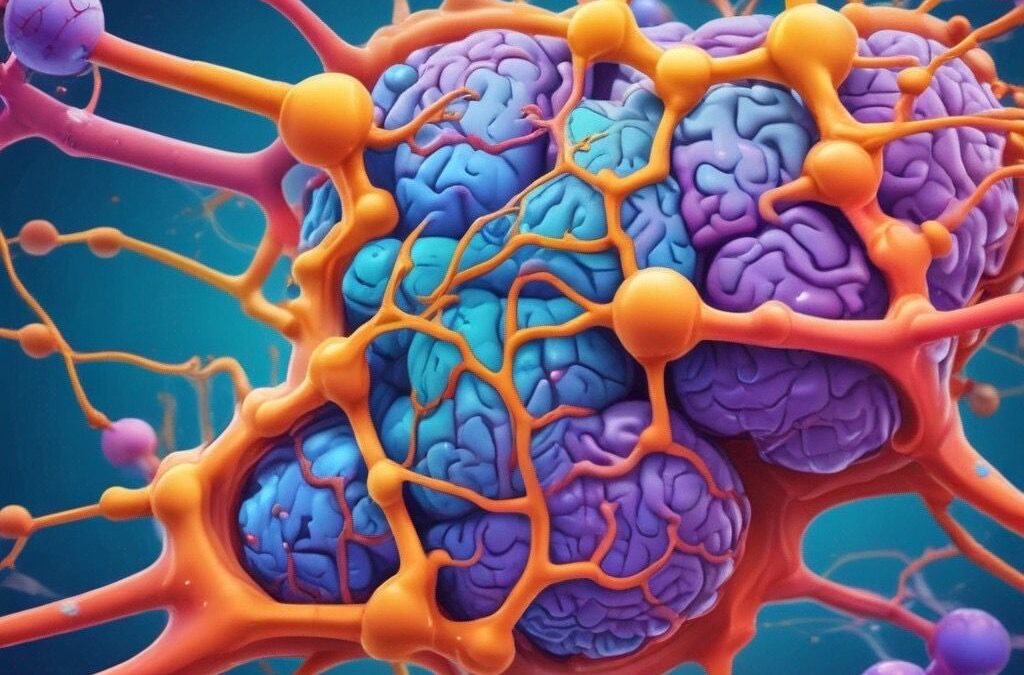Ayahuasca is a psychoactive beverage traditionally used in religious and healing ceremonies by indigenous peoples of the Amazon. It is primarily composed of the vine Banisteriopsis caapi and the leaves of the plant Psychotria viridis. The main active components of ayahuasca are harmala alkaloids (such as harmine and harmaline) and DMT (dimethyltryptamine).
Dopamine is a crucial neurotransmitter in the brain, associated with functions such as motivation, pleasure, reward, and movement regulation. Dopaminergic systems are involved in many cognitive and behavioral functions and are the focus of study in various neurological and psychiatric diseases, such as Parkinson’s disease, schizophrenia, and addiction.
The interaction between ayahuasca and the dopamine brain function systems can be complex due to the combination of its active components. Some key points about this interaction are:
1. *MAO Inhibition*: The harmala alkaloids in ayahuasca act as monoamine oxidase inhibitors (MAOIs). MAO is an enzyme that breaks down neurotransmitters such as dopamine. Inhibiting this enzyme can increase dopamine levels in the brain.
2. *Effects of DMT*: DMT, one of the active components of ayahuasca, is a potent agonist of serotonin receptors, especially the 5-HT2A receptor. Although DMT has a lower affinity for dopamine receptors, its influence on the serotonergic system can indirectly affect the release and regulation of dopamine.
3. *Modulation of Mood and Perception*: The increase in dopamine levels and the activation of the serotonergic system can lead to significant alterations in mood, perception, and cognitive experiences, which are hallmark characteristics of ayahuasca experiences.
4. *Potential Therapeutic Benefits*: Some studies suggest that ayahuasca may exhibit antidepressant and anxiolytic effects, possibly attributed to its influence on neurotransmitter systems, including dopamine. These effects could position ayahuasca as a potentially valuable tool in the treatment of mood disorders and addictions.
5. *Risks and Precautions*: It’s crucial to emphasize that, given its potent impact on the brain, the use of ayahuasca should be approached with caution. MAO inhibition and the elevation of dopamine levels can potentially lead to hazardous interactions with certain medications and health conditions.
Dopamine: Function and Relevance
Dopamine is a crucial neurotransmitter in the central nervous system, playing key roles in functions such as reward processing, motivation, pleasure sensation, and regulation of movement. Abnormalities in dopamine levels have been linked to a variety of neurological and psychiatric disorders, including Parkinson’s disease, schizophrenia, and addiction.
Preclinical Studies
Animal Models
A significant portion of the initial research on ayahuasca and its interaction with dopamine has been carried out using animal models. For instance, a study conducted with rats demonstrated that the administration of harmine, a component of ayahuasca, led to an increase in dopamine release in the nucleus accumbens, a brain region closely associated with pleasure and reward. This finding suggests that the constituents of ayahuasca may exert an influence on dopaminergic systems.
Clinical Studies and Human Trials
Neuroimaging and Neurochemistry
Studies involving human participants have utilized advanced neuroimaging techniques to explore the impact of ayahuasca on the human brain. Through functional magnetic resonance imaging (fMRI), researchers have observed that ayahuasca enhances connectivity between brain regions responsible for mood regulation and perception. This heightened connectivity may be linked to the modulation of dopamine systems.
Neurotransmitter Studies
A clinical trial featured in the Journal of Psychopharmacology delved into the effects of ayahuasca on neurotransmitter levels within the human brain. The study findings indicated that ayahuasca promotes the release of dopamine, alongside other neurotransmitters like serotonin. This research suggests that ayahuasca may possess modulatory effects on dopamine systems, potentially elucidating its antidepressant and anxiolytic properties.
Ayahuasca Peru Best Ayahuasca Retreats Peru Ayahuasca Iquitos Shamanic School Peru Flower of life Ayahuasca Peru Ayahuasca Healing Center
We would be delighted to welcome you to our sanctuary, where experienced shamans and facilitators will guide you through sacred ceremonies and rituals with reus at the Flower of Life Ayahuasca Healing Center for an unforgettable experience in the heart of Peru’s Amazonian Rainforest. Embrace the opportunity to reconnect with yourself, nature, and the sacred traditions of the jungle, and embark on a journey of self-discovery and empowerment. We look forward to walking this path with you and supporting you on your quest for healing and transformation.
www.floweroflifeperu.com

